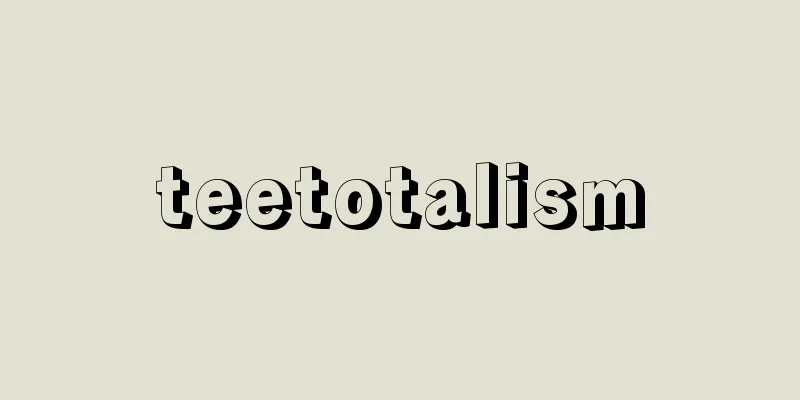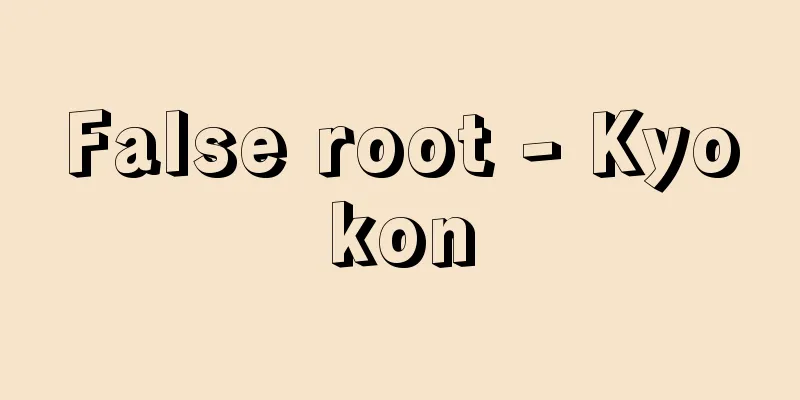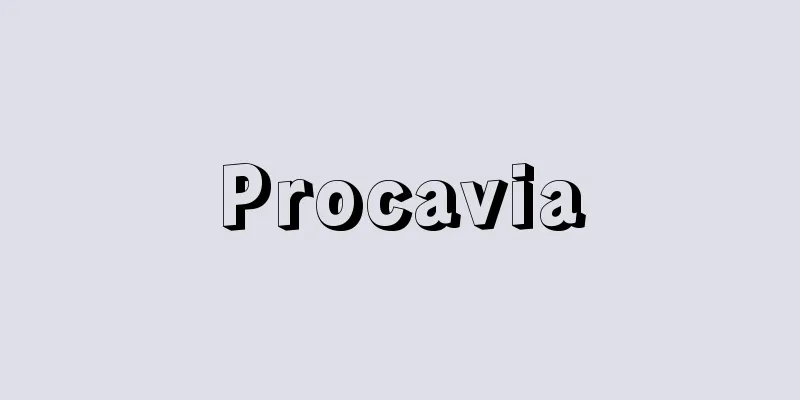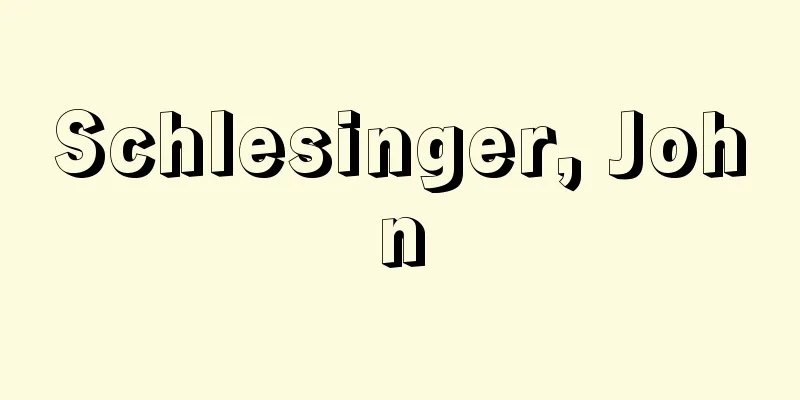Shame - haji (English spelling)

|
When people experience feelings of shame, they are motivated to behave in a way that will prevent them from experiencing those feelings again. Shame is a kind of code of conduct in such cases. In other words, when actions are guided by the consciousness of trying to avoid embarrassment, the content of that consciousness is called "shame." [Yoshitoshi Hamaguchi] Embarrassment and ShameIt is sometimes said that humans are the only animals that know shame. In this case, shame is not simply the emotional experience of feeling embarrassed in front of others, but rather the morality that guides our subsequent behavior based on that embarrassing experience. Originally, the feeling of embarrassment occurs when one does something conspicuous or makes a mistake in front of others, or when one's own shortcomings or appearance that one considers ugly are pointed out. In the former case, one fears that one's behavior may lower one's evaluation of oneself, while in the latter case, one is made aware of one's inferiority in relation to others. In either case, the feeling of embarrassment arises when one's self-evaluation is lowered relative to others. In other words, embarrassment occurs in situations where one's self-esteem is damaged in interpersonal relationships. In short, this feeling of shame is linked to the worry of being laughed at or having a bad reputation, and therefore criticism by others has a strong restrictive effect on the direction of social behavior. Thus, the feeling of embarrassment is transformed into a sense of "shame" that fears rumors and ridicule from others. Regarding this point, American cultural anthropologist Benedict states, "Shame is a reaction to the criticism of others. One is humiliated either by being openly ridiculed and called unworthy by others, or by thinking one has been ridiculed. In either case, shame is a powerful moral restraint, but it requires that the ridicule is actually public, or at least that one thinks it is public" (The Chrysanthemum and the Sword). In other words, one tries to avoid the ridicule (which would be shameful for oneself) by imagining the others around oneself, which, according to Benedict, means "to be mindful of public opinion of one's own actions," and therefore "to base one's course of action on the judgment of others." [Yoshitoshi Hamaguchi] Culture of shameBehavior based on "shame" seeks standards for one's own behavior from others, and is contrasted with "sinful" behavior, which follows standards implanted within oneself (conscience or religious law). In "sinful" behavior, the goodness or badness of one's own actions is judged by internal standards established within the ego. Actions that go against these standards give rise to a sense of self-blame and "guilt." "Sin," which imposes internal punishment on actions, and "shame," which exerts external control, are opposing concepts, and Benedict used this to attempt to categorize cultures. According to his analysis, Western society has a "guilt culture," which is a society that "preaches absolute moral standards and relies on the enlightenment of conscience," while Japanese society belongs to a "shame culture," which "performs good deeds based on external coercion." In the former, people are tormented by guilt even when their bad deeds are not known to others, while in the latter, the driving force behind morality is avoiding embarrassment in public. The difference is whether the basis of morality is internal or external. However, it is not necessarily appropriate to distinguish between "sin" and "shame" based on whether the source of punishment is internal or external. This is because, as sociologist Keiichi Sakuta (1922-2016) stated, "people first learn what sin is by receiving punishment from the outside. And also because those who know shame control themselves" (Sociology of Values). Whether the standard of behavior is internal or external is not the deciding factor for distinguishing between "sin" and "shame." Even in the Japanese "culture of shame," it can be considered that there is plenty of autonomous behavior despite the externality of the standard of behavior. Acting in a way that does not bring shame to one's name (honor) or being driven by a sense of shame without being known to others is a manifestation of subjective control through "shame." Furthermore, even among Japanese people, there was a thorough view of sin, as seen in the thought of Shinran, and even at the secular level, one can find a sense of "sin" as remorse for a seriously ill parent (a feeling of repentance for one's true guilt). Benedict's theory needs to be reconsidered. [Yoshitoshi Hamaguchi] "Rethinking the Culture of Shame, by Keiichi Sakuda (1967, Chikuma Shobo)" ▽ "Sociology of Value, by Keiichi Sakuda (1972, Iwanami Shoten)" ▽ "Rediscovering 'Japaneseness', by Yoshitoshi Hamaguchi (1977, Nihon Keizai Shimbun)" ▽ "The Definitive Translation of The Chrysanthemum and the Sword, by Ruth Benedict, translated by Matsuji Hasegawa (Shakai Shisosha, Gendai Kyoyo Bunko)" [References] | | | |Source: Shogakukan Encyclopedia Nipponica About Encyclopedia Nipponica Information | Legend |
|
人は、恥ずかしいという感情を味わうことによって、そのような思いを二度としないようにふるまおう、という気持ちになるものである。そうした場合の一種の行為規範をいう。つまり、恥をかかないようにしようとする意識によって行為が導かれたとき、その意識内容をさして「恥」というのである。 [濱口恵俊] 恥ずかしさと恥人間は恥を知っている唯一の動物だといわれることがある。その場合、恥というのは、人前で恥ずかしい思いをするという、単なる感情体験をさすのではない。むしろその恥じらいの体験をもとにして、その後における自分の行為を方向づけるモラルなのである。 元来恥ずかしいという感情は、目だった行為をしたり皆の前で失敗をしでかしたりしたとき、あるいは自己の欠点や醜いと思っている容姿が指摘されたときにおこる。前者では、その行為によって自分に対する評価が下がるかもしれないことを恐れているのであり、また後者では、他人に対する自己の劣位が知らされることになる。いずれにせよ、自分についての自己評価が、他者との関係のなかで相対的に低下するとき、恥ずかしいという気持ちがおこるのである。いいかえれば、恥ずかしさというものは、当人の自尊心が対人関係のなかで損なわれるような状況で生じる。要するにこのような羞恥(しゅうち)心は、人の笑いものになったり、世評が悪くなることを心配する気持ちと結び付いており、したがってまた、人の目による批評は、社会的な行為を方向づけるうえで大きな規制力をもつことになる。そこで、恥ずかしいという感情は、人のうわさや嘲笑(ちょうしょう)を恐れるという「恥」の意識に転化されるに至る。 この点に関して、アメリカの文化人類学者ベネディクトは、次のように述べている。「恥は、他の人々の批評に対する反応である。他人から公然とあざけ笑われ、値打ちがないといわれるか、あるいは、あざけられたと思い込むか、そのいずれかによって、人は恥辱を被る。どちらの場合でも、恥はよく効く道徳的拘束となる。だが、それには、実際に人前のことであるか、それとも少なくとも人前でのことだと思い込むか、といった条件が必要である」(『菊と刀』)。つまり、周りの他人を想定し、その嘲笑(本人にとっては恥)を回避しようとするわけだが、それは、「自己の行動に対する世評に気を配るということ」であり、したがってまた「他人の判断を基準にして自己の行動の方針を定める」ことだ、とベネディクトはいう。 [濱口恵俊] 恥の文化「恥」に基づく行動というのは、自己の行為の基準を他者の側に求めるものであり、それは、自己の内部に植え付けられた基準(良心とか宗教的なおきて)に従う「罪」行動とは対照的だとされる。「罪」行動では、自我のなかに確立された内面的基準によって自己の行為の善悪が判断される。それにもとる行為は、自責的な「罪」の意識を生み出すのである。 行為に対する内面的制裁を行う「罪」と外面的な制御を加える「恥」とは対概念になっているが、ベネディクトは、これを活用して文化の類型化を試みた。それによれば、西欧社会は「道徳の絶対的標準を説き、良心の啓発を頼みにする社会」として「罪の文化」guilt cultureをもち、他方、日本の社会は「外面的強制力に基づいて善行を行う」ような「恥の文化」shame cultureに属している。前者では、悪い行いが人に知られない場合にも自ら罪悪感にさいなまれ、後者では、人前で恥をかかないようにすることが道徳の原動力になるという。モラルの根拠が内にあるか外にあるかの違いである。 しかしこのように、制裁の源が内にあるか外にあるかによって「罪」と「恥」とを分けることは、かならずしも適切ではない。なぜなら、社会学者作田啓一(さくたけいいち)(1922―2016)が述べたように、「人間はまず外側から罰を受けることによって、何が罪であるかを知るようになるからである。そしてまた、〈恥を知る人〉は自分自身で自分をコントロールするからである」(『価値の社会学』)。行動の基準が内在しているか外在のものであるかということは、「罪」と「恥」とを分ける決め手にはならないであろう。日本人の「恥の文化」においても、行為基準の外在性にもかかわらず自律的行為は十分にある、とみなしうる。名(名誉)に恥じぬよう行動したり、人知れず羞恥の念に駆られるのは、「恥」による主体的制御の現れである。さらに日本人においても、親鸞(しんらん)の思想にみられるような徹底した罪業(ざいごう)観があったし、また世俗的レベルでも、重病の親に対する悔悟の念(本当にすまなかったという懺悔(ざんげ)心)としての「罪」の意識もみいだせるであろう。ベネディクトの説は再検討される必要がある。 [濱口恵俊] 『作田啓一著『恥の文化再考』(1967・筑摩書房)』▽『作田啓一著『価値の社会学』(1972・岩波書店)』▽『濱口恵俊著『「日本らしさ」の再発見』(1977・日本経済新聞社)』▽『ルース・ベネディクト著、長谷川松治訳『定訳 菊と刀』(社会思想社・現代教養文庫)』 [参照項目] | | | |出典 小学館 日本大百科全書(ニッポニカ)日本大百科全書(ニッポニカ)について 情報 | 凡例 |
<<: Horse market - bashi (English spelling) ma-shi; ma-shih
Recommend
Yonosuke Natori
Photographer and photo editor. Born in Takanawa, ...
Mochtar Lubis
1922‐2004 Indonesian writer and journalist. Born i...
Ming-dao-qian (English spelling)
A type of currency. It was circulated mainly in Ya...
《Mason Manole》 - Ishikuma
… [Literature, Theatre] Romanians are a people bo...
Nougat - English spelling nougat French
A type of soft candy. Sugar and starch syrup are ...
Lumbago - Lumbago
What is the disease? This is lower back pain that...
"Now, I'll replace it" - Now, I'll replace it
…The author is unknown. The original book has bee...
Violent 50 degrees - Violent 50 degrees
...In the Northern Hemisphere, there are many con...
Society
Society refers to a state in which multiple people...
Canthophora nigricans - Canthophora nigricans
…It is also suitable as livestock feed. The plant...
Honcho Monzui
A collection of Chinese poetry and prose from the...
sweet lime
…Several lime species have been reintroduced in r...
Multiplication operator
...The simplest of these is the differential oper...
Yen contract - Enyakkaan
… In Japan, gold coin clauses are recognized unde...
Diffusion pump - Kakusan pump (English name) diffusion pump
A type of jet pump used to obtain a high vacuum su...









![Ocean [island] - Ocean](/upload/images/67cb1d5e0f29c.webp)